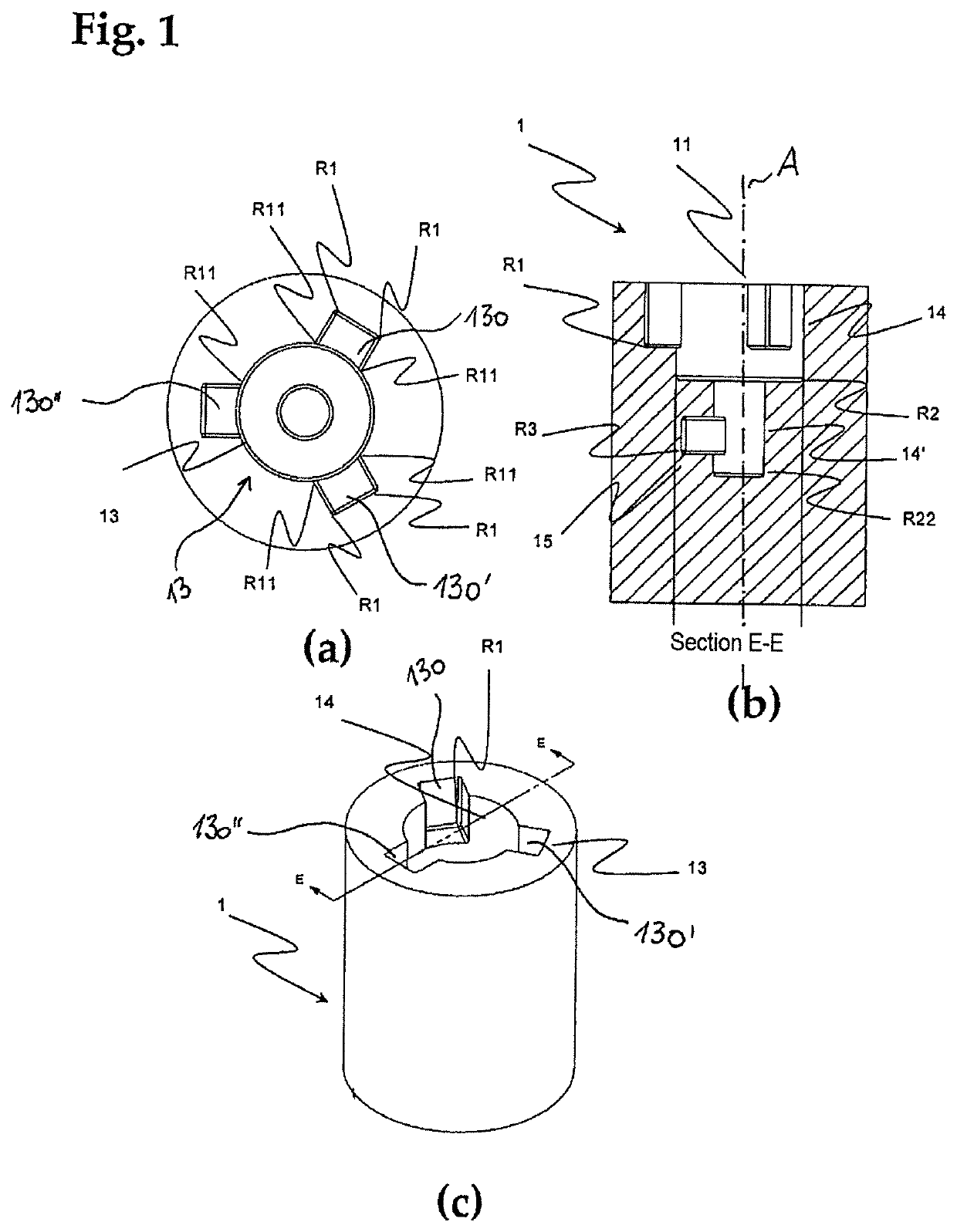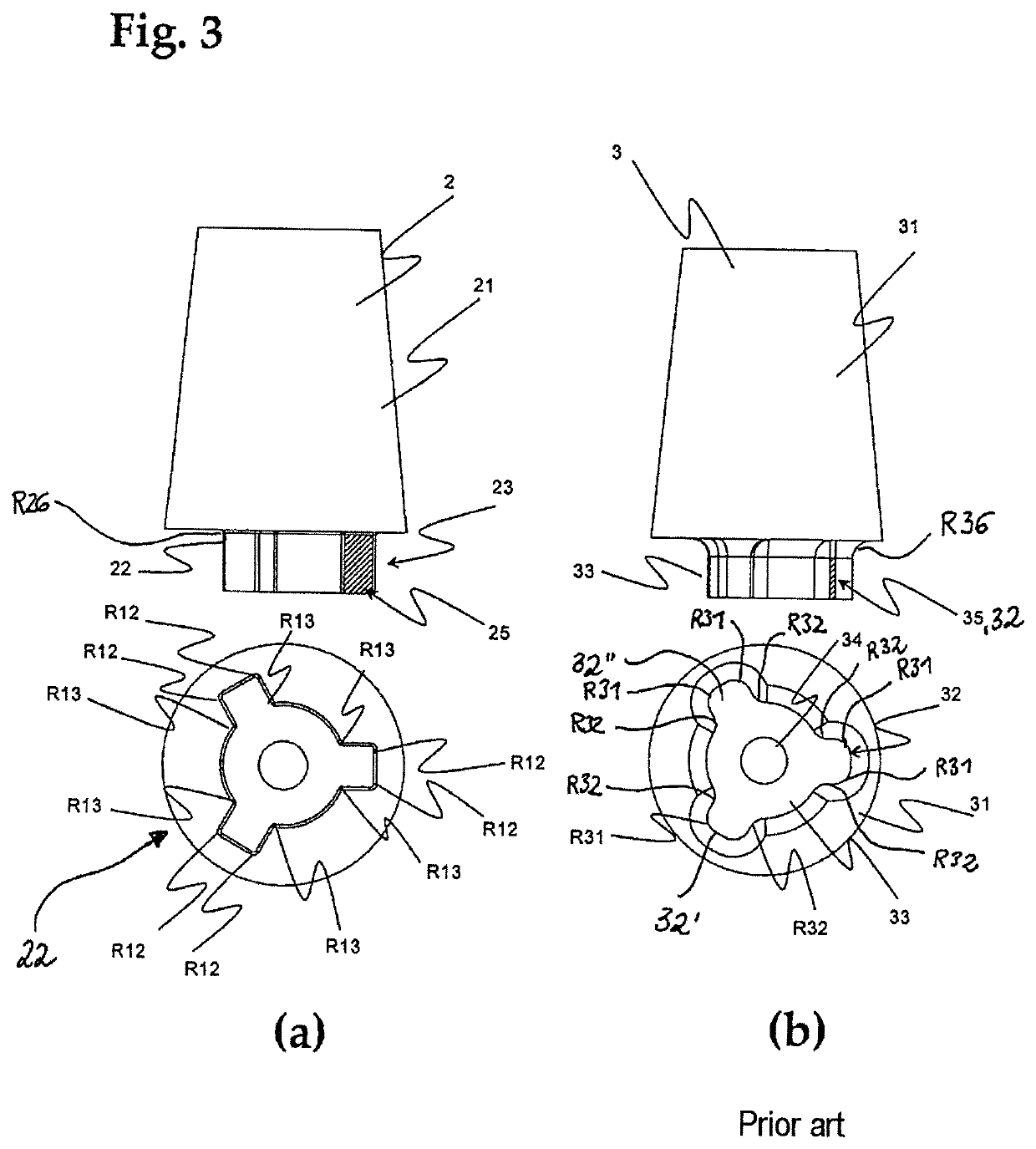Ceramic implant
a ceramic implant and implant technology, applied in the field of ceramic implants, can solve the problems of inability to meet the production tolerances, grinding techniques, design of the internal bore of the implant, etc., and achieve the effects of improving the mechanical stability of the implant, improving the freedom of design of dental prosthetic care parts, and small corner radii
- Summary
- Abstract
- Description
- Claims
- Application Information
AI Technical Summary
Benefits of technology
Problems solved by technology
Method used
Image
Examples
Embodiment Construction
[0063]The production of the inventive dental prosthesis system, particularly the machining of the corner radii, is realized with the aid of an ultrashort pulse laser. In a preferred variation of the inventive method, the pulse duration of the ultrashort pulse laser amounts to 10 ps [picoseconds]. The laser used has an average output of 10 watt, a pulse frequency of 50 kHz-8.2 MHz and a wavelength of 1064 nm [nanometer]. In another preferred variation, the laser output amounts to 8 watt and the pulse frequency amounts to 100 kHz. An exemplary scanning speed of the laser lies at 100 mm / s.
[0064]In another variation, the production of the inventive dental prosthesis system is realized with the aid of a full diamond milling cutter and / or drill that is fixed in a conventional CNC milling machine. In an exemplary variation, the drilling operation is carried out with a cutting speed of 20 (m / min) and an advance of 2 mm / min. The drill used has a diameter, for example, of 1.8 mm and a length ...
PUM
| Property | Measurement | Unit |
|---|---|---|
| corner radii | aaaaa | aaaaa |
| corner radius | aaaaa | aaaaa |
| corner radius | aaaaa | aaaaa |
Abstract
Description
Claims
Application Information
 Login to view more
Login to view more - R&D Engineer
- R&D Manager
- IP Professional
- Industry Leading Data Capabilities
- Powerful AI technology
- Patent DNA Extraction
Browse by: Latest US Patents, China's latest patents, Technical Efficacy Thesaurus, Application Domain, Technology Topic.
© 2024 PatSnap. All rights reserved.Legal|Privacy policy|Modern Slavery Act Transparency Statement|Sitemap



